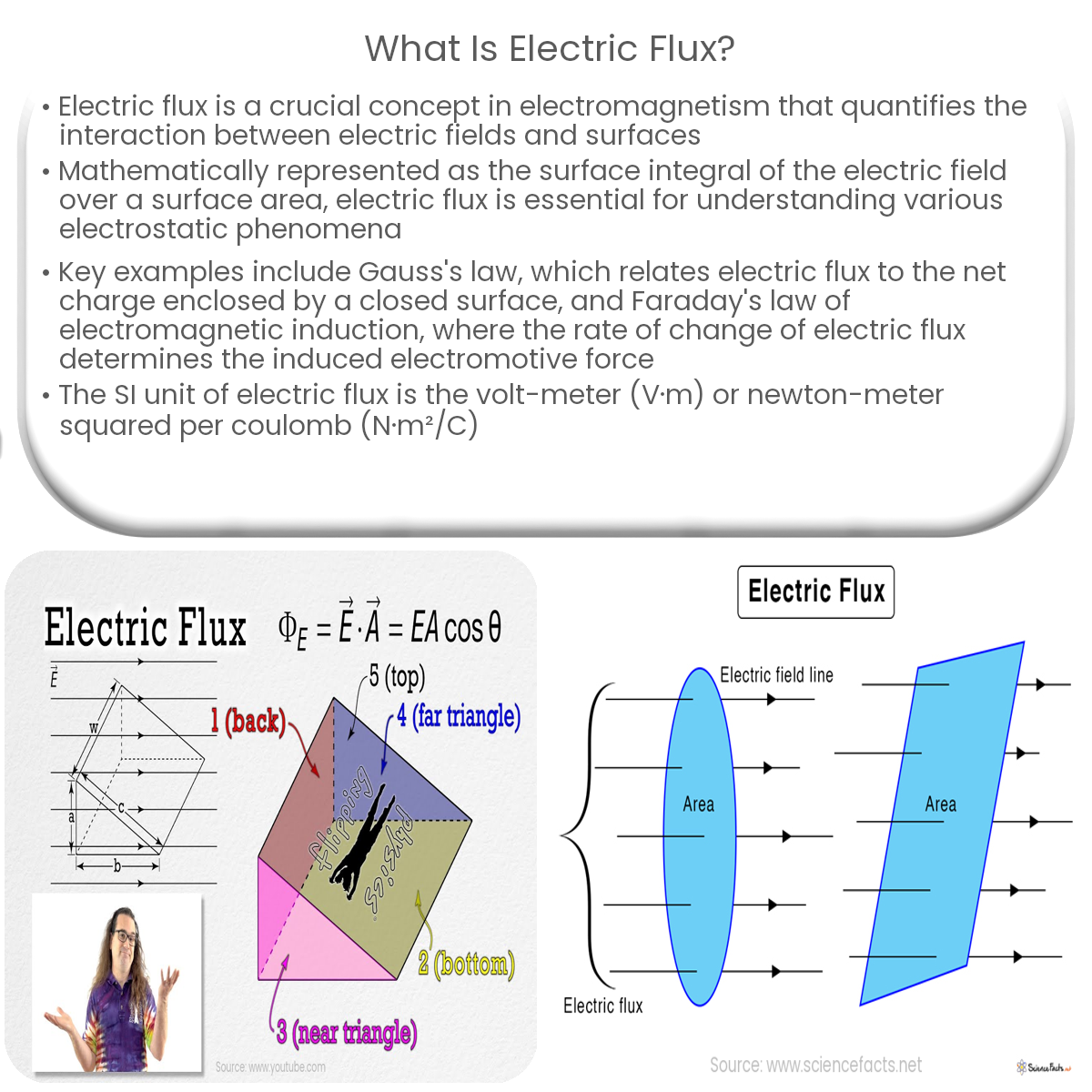Electric flux is a measure of the electric field passing through a surface, considering the field’s orientation with respect to the surface normal.
Introduction to Electric Flux
Electric flux is a fundamental concept in electromagnetism, which helps to quantify the interaction between electric fields and surfaces. In this article, we will explore the definition of electric flux, its mathematical representation, and its significance in the field of electrostatics.
Definition of Electric Flux
Electric flux is a measure of the electric field passing through a surface. It is a scalar quantity that represents the total electric field lines penetrating the surface, taking into account their orientation with respect to the surface normal. Electric flux provides valuable insight into the behavior of electric fields and is crucial for understanding many electrostatic phenomena.
Mathematical Representation of Electric Flux
Electric flux (ΦE) can be mathematically expressed as the surface integral of the electric field (E) over the surface area (A), considering the angle (θ) between the electric field and the surface normal:
ΦE = ∫ E · dA = ∫ E · cos(θ) dA
For closed surfaces, the surface integral becomes a closed surface integral, denoted by a circle around the integral sign:
ΦE = ∮ E · dA
Significance of Electric Flux
Electric flux plays an essential role in understanding and analyzing various electrostatic phenomena, as highlighted below:
- Gauss’s Law: Electric flux is a key component of Gauss’s law, which states that the electric flux through a closed surface is proportional to the net charge enclosed by the surface. This principle is widely used to calculate electric fields for symmetric charge distributions.
- Electric Field Lines: Electric flux is directly related to the number of electric field lines passing through a surface, providing a useful way to visualize and interpret electric fields.
- Faraday’s Law of Electromagnetic Induction: Electric flux is also important in Faraday’s law, which describes the generation of an electromotive force (EMF) in a conducting loop due to a changing magnetic flux. The rate of change of electric flux determines the induced EMF.
Units of Electric Flux
The SI unit of electric flux is the volt-meter (V·m), also known as the weber (Wb) when referring to magnetic flux. However, the units can also be expressed as newton-meter squared per coulomb (N·m2/C).
In conclusion, electric flux is a fundamental concept in electromagnetism that quantifies the interaction between electric fields and surfaces. It plays a critical role in understanding various electrostatic phenomena, including Gauss’s law and Faraday’s law of electromagnetic induction. Electric flux provides valuable insights into the behavior of electric fields and is essential for the study of electromagnetism.


